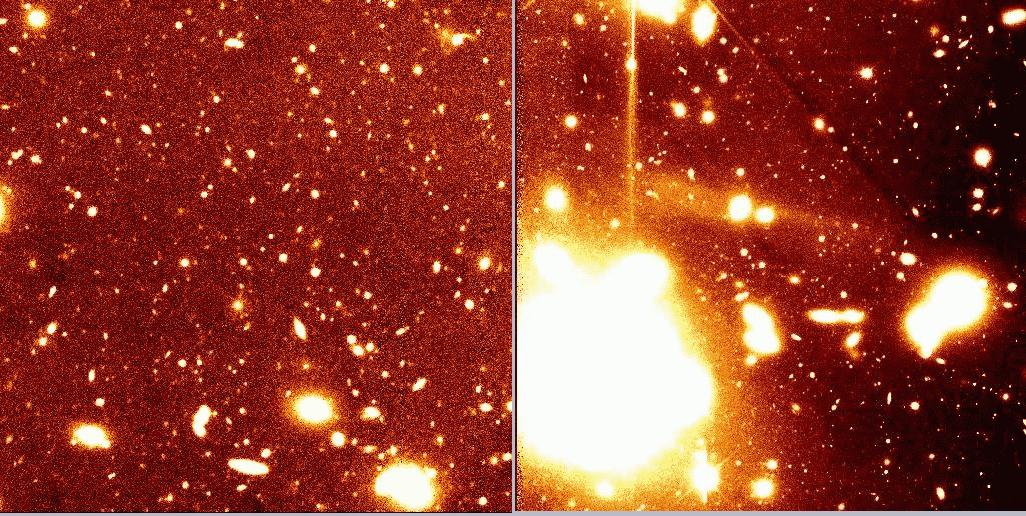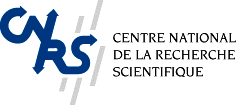
The COMA cluster of galaxies
Credit: A. Mazure , C. Adami & C. Savine
Laboratoire d'Astrophysique de Marseille, France

The distribution of matter in the Universe is highly structured. Stars
gather in galaxies. Galaxies themselves are grouped in clusters.
Clusters of galaxies are the largest structures in dynamical
equilibrium in the Universe. They are composed of dark matter, hot gas
and galaxies. Such systems act as very large cosmological
laboratories. In this harsh environment, galaxies are subject to many
abuses: they suffer stripping by the hot intracluster medium, tidal
disruption by the cluster gravitational field, destructive encounters
with neighbors.
The Coma cluster is a prototypical rich cluster of galaxies, with over
a thousand members known. We present two enlargements of
an optical image of the core
of the Coma cluster recently obtained with the CFH12K camera. It
represents one of the deepest view of Coma on such a large field (two
times 30 arcmin x 40 arcmin). Most of the objects in these pictures
are galaxies, mostly ellipticals and SO. The two luminous central
giant elliptical galaxies, NGC 4889 (left) and NGC 4874 (right), are
clearly identified in the large
scale mosaic . The two enlargements shown here reveal interesting
features of this image: (Bottom Right) a close-up on MGC 4874 and a
tidal tail (field of view shown: 8'x8'), resulting probably from the
disruption of small galaxies in the gravitational field of the central
ellipticals, (Bottom Left) an example of the swarm of faint galaxies
detected down to R=25 both in the cluster and in the background
(field: 4'x4').
Such images associated with spectroscopy, allow to understand the
kinematical properties of these large structures, and therefore to
study the mass distribution of the galaxies in these systems,
especially at the low mass end, a key parameter for cosmological
studies. Other important issues that can be addressed are: the structure
of the line of sight, the tidal disruption efficiency in the core of the
cluster, chemical abundances of the galaxies, and study of the diffuse light.
The image presented is a mosaic of 2 CFH12K fields in the R band taken
on February 6th and 7th, 1999 and April, 9th and 10th, 2000. Exposure time
is 1 hour. The seeing was around 0.9 arcsec. The pixel scale is 0.2
arcsec. For the top mosaic an 8x8 pixel binning has been used. North is up,
East to the left.
Technical description:



